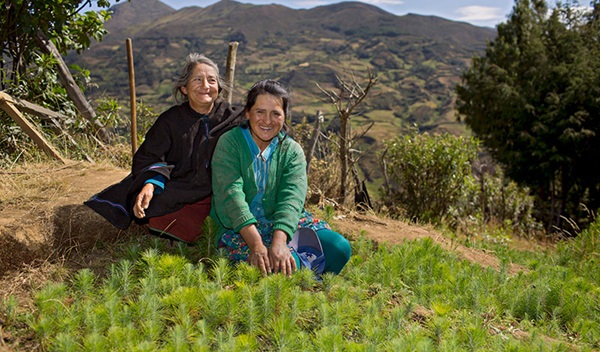SDGs 6, 14 & 15 – All about water, sanitation and life
Continuing our series of blog posts about the relationship between the Sustainable Development Goals and Fairtrade, this month we’re focusing on three Goals:
- Goal 6 – Clean water and sanitation
- Goal 14 – Life Below Water
- Goal 15 – Life on Land
We see these three Goals as interconnected and part of the bigger picture of life on our planet.
Some people may think that Fairtrade just means better prices for producers, but environmental sustainability is an essential part of our Standards and of our vision for long-term empowerment for farming communities in the Global South.
According to the UN “millions of people including children die every year from diseases associated with inadequate water supply, sanitation and hygiene. Water scarcity, poor water quality and inadequate sanitation negatively impact food security, livelihood choices and educational opportunities for poor families across the world.”
Access to clean water and decent sanitation can be a problem for many Fairtrade farmers and workers, but there are solutions. Some organizations have used the Fairtrade Premium (an additional sum paid on top of the price of Fairtrade goods) to fund toilet facilities, wells and water distribution systems for their members and the wider community.
The image above shows a well at the SCINPA cooperative in Ivory Coast. The cocoa-producing organization is working over time to provide clean water to all the villages where their producers live. Photo by Sean Hawkey.
Use of water and resilience to climate change are also critical factors for many Fairtrade producers. Crops all need water to grow, and some of our small-scale farmers are struggling to adapt as climate change can mean either more rain (leading to flooding) or less rain (leading to drought) than historically was the case since farms were first established. Fairtrade International has implemented a Climate Standard which allows producers to make their contribution to climate change mitigation while adapting to climate change.
Some products also need to use water for processing. Bananas have to be washed in multiple different vats before export. At ASOGUABO farms in Ecuador, they use complex water filtration and recycling systems to minimize the amount of fresh water used.
The ‘wet method’ for processing coffee cherries also requires a significant volume of water, so many Fairtrade producers use the ‘dry method’ which sees the cherries spread out on patios or racks to dry naturally in the sun. This requires more manual labour but uses much less water. Here we see Wilson Pedroso Lima and José Milton Bento raking coffee that is drying in the sun at the COOPASV coffee-producing cooperative in Brazil. Photo by Didier Gentilhomme.

When it comes to life on land and below water, the Fairtrade Standards include strict controls on what pesticides can be used, both for the safety of the people applying them and for the protection of the land and water sources. Many Fairtrade producer organizations are also certified organic, which further reduces the risk of damage to life and land.
The major targets of Goal 15 are to sustainably manage forests, combat desertification, halt and reverse land degradation and halt biodiversity loss. Planting additional types of harvestable crops alongside coffee, cocoa or other Fairtrade plants is a common way for producers to protect their farms, while also providing food for the farming families to eat themselves, or to sell on local markets for additional income.
All 840,000+ Fairtrade coffee producers are small-scale farmers, with the average plot being only just larger than a football field. Fairtrade has provided many farmers with training on the importance of biodiversity and soil quality. A number of producer organizations have used the Fairtrade Premium to develop plant nurseries, often with a dual purpose. One is to ensure a constant supply of new coffee plants to keep farms healthy; the other is to reforest areas that had previously been stripped of trees. Below are Teodola García García and Erlinda García Jiménez tending pine trees in a nursery located in the village of Cajas near Choco in northern Peru. For a number of years, the Norandino coop has been working to reforest barren hillsides. Photo by Danielle Villasana.
